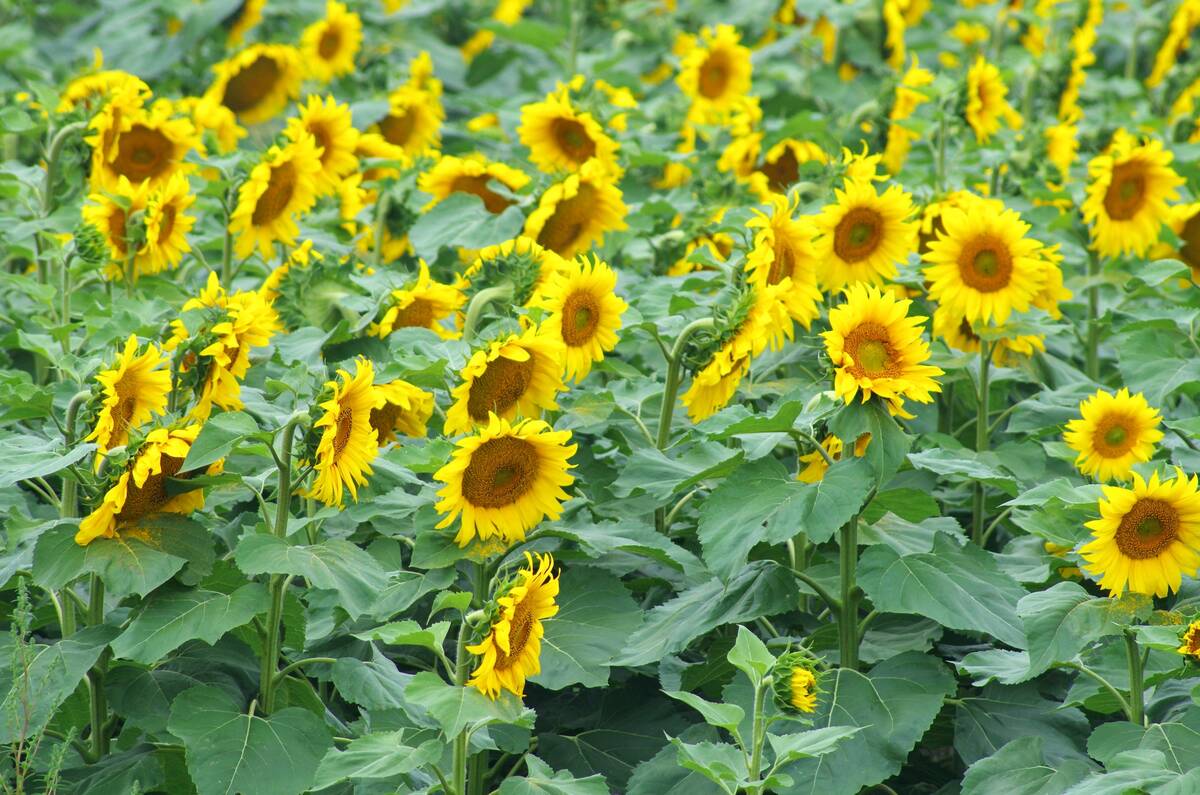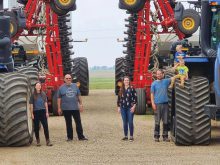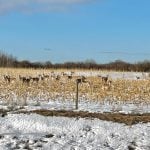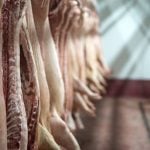The Prairie Farms feature will be an ongoing series that highlights western Canadian producers and their farm operations. These producer and farm profiles will share the strategies, tips and experiences that have helped Prairie farmers be successful. Along with crop production strategies, this Q-and-A series will look at the personalities and lifestyles of farmers across Western Canada.
For this farm profile, Braden Hursh spoke with Saskatchewan grain farmer Chad Andrews.
Q: Where do you farm?
A: I am located in Hazlet, Sask. It is a village in the southwest corner of the province.
Read Also

Made-in-Manitoba sunflower hybrid headed to market
Manitoba’s confection sunflower growers will have a new seed option next spring developed specifically for performance in the province. The…
How much land do you farm?
A: We operate on about 4,300 seeded acres.
Q: How long have you been farming?
A: I took over the farm in 2008, but I was operating equipment when I was 12 years old. I just enjoy it. There’s nothing like it.
Q: Who is involved in your farming operation?
A: It is a family farm, so there is my wife, Britny, and I, along with my best friend, who works far too hard. My friend and I have a great partnership, and it has allowed us to grow as an operation and ensure that he has some land to his name as well. Six quarters of land recently came up for sale and I was able to buy four and he was able to buy two.
I also have three daughters, Lila (9), Kate (6) and Ruby (4). We are always busy.
Q: What kind of secondary education do you have?
A: I took two years of drama at the University of Saskatchewan, which was a lot of fun, and I met some wonderful people and expanded my view of the world. Then I went on to SIAST (Saskatchewan Institute of Applied Science and Technology) and I took automotive mechanics.
Q: What are the main crops you grow?
A: Durum, wheat, Oriental mustard, red lentils and barley. But we only grow barley because the agrologist tells me to. The Oriental mustard is definitely unique for our region. We chose to grow it because a neighbour offered me some seed years back and it just became something we got used to growing.
Q: What has been your best crop historically?
A: Durum wheat. We had an 80-bushel durum crop in 2013. Everything just lined up perfectly that year. In 2020, I had several 60-bushel durum crops where we were filling a bin with every quarter. But then in 2021 it took 10 fields to fill a bin.
Q: What is your crop rotation?
A: We are on a four-year rotation plan. We go wheat, lentil, barley and, finally, mustard. Barley is supposed to clean up a field, but that hasn’t always been the case for us.

Q: What kind of soil type do you farm in?
A: The majority of the soil we farm is Fox Valley silty loam clay. It is a Brown soil. The next town over, Cabri, is a real heavy gumbo. I recently bought some land that is extremely silty and we have other land that is very sandy. It is amazing how much it can vary in such a small region.
Q: What kinds of things do you need to adjust or do differently based on soil types?
A: We definitely need to grow crops that produce a standing fibre and leave some straw behind. We try to get some organic matter to stay standing and build up on top, which helps hold the soil down.
Barley is one of the best for this, even though it is a pain to grow … too itchy and you don’t make a lot of money. But if you have an agronomist in your repertoire, they will tell you to grow barley because it is so good for our land type. It’s so good for the soil, and since soil makes us money, we better treat it right. Our ancestors mined the hell out of this land and now we are trying to make it better for the next generation of farmers.
Q: Do you have an agronomist on retainer for your farm?
A: We do. As a farmer, you are supposed to know everything but that simply isn’t the case. I don’t know everything, and I know it. So, I spent some money on a guy that knows a lot about minerals and soil testing, and it has made a huge difference for us. He lets us be more efficient on the farm and, in my opinion, efficiency is key to being a successful farmer.
Q: What do you do differently on your farm?
A: Well, elemental sulphur is one, boron is another. I put both on every square inch of the farm now and it’s good for about four to five years, as the plants use it up before it needs to be reapplied.
My agronomist also said that my nitrogen, phosphorus and potash levels need to be at a certain point in parts per million before I can start trying my luck with some micros like copper, zinc and a couple of others. I’ve been seeing some studies and I think it is definitely something that producers should look into for their own fields.
We also do variable rate nitrogen application, which has been an amazing change for me. My agronomist will do about 160 samples per quarter and with satellite imagery over the past five years he will create a map that gets fed into my system and it meters out the nitrogen based on what the soil needs.
It creates four zones and as my tractor rolls along, different amounts of nitrogen will be running through the air drill. In the low spots, where the crops grow the best, the system just pours on the nitrogen because that’s where we will have the most success.
Q: What is your seeding outfit?
A: I have John Deere equipment because my father and his father before that had John Deere. We know the parts people and we like them. A lot of my equipment is older and paid for. I’m able to fix a lot of things myself, so it is nice to know the pieces I’m working on. New equipment would be great, but it’s just too expensive.
I run a 2004 John Deere 9620 tractor with a 12.5-litre (engine) and 500 horsepower. This tractor just barks when it runs, and it reminds me of my hot rod. I love the sound of a good engine. I use a hoe drill right now. I’m hoping to move to a ParaLink soon.

Q: What do you harvest with?
A: We run one combine. In southwest Saskatchewan it is a lot drier, and we have longer working hours, so we can get away with a single combine for our acres. I have a John Deere combine. I had been trading up every five years or so, but then prices became ridiculous. I finally decided to buy out my lease and keep it running.
We try to keep our combine running as much as we can, and sometimes we really push to stay ahead of the weather. You know your hours are getting silly when you go to check the oil in the morning and the engine block is still warm from the last guy.
I’ll ask my friend, “How late did you go?”
“Late enough,” he replies.
Q: What advice would you give to other farmers?
A: Don’t be silly. Slow down. Take breaks. Don’t put yourself at risk. For me, if you break down or get stuck, just stop and take a breath.
My big motto on the farm that I’ve been trying to instill in my kids is: “If you’re going to get stuck, just stop. If you drive into a slough and you can’t back out, just stop or else you’ll make it worse.” No need to bury yourself past the axles and risk breaking something when you can just ask for help. Spend the time and save the headache.
The next thing I would say is too many farmers are far too secretive. Whether it’s yield or land purchases or even good advice, too many farmers don’t want to share their knowledge.
I always tell people my yield and what I’m using if they want to know. Maybe it’s because they don’t want others to know what their income is, but we aren’t all good at every aspect of farming, so we need to share to help improve each other. We all win that way. You having a better yield than me doesn’t affect my bottom line.
Q: What do you do for fun?
A: Well, going back to my background as a mechanic, I always loved working on cars, but I didn’t love working at a dealership or in a shop. So now I fix and modify cars in the winter. I have a drag racing car that I’ve been working on for a while, and it is so much fun. I have a 1979 Oldsmobile Cutlass that used to be my mom’s. I threw a new motor and a turbo into the car and now I have it doing nine seconds on the quarter mile — zero to sixty in two seconds.
















